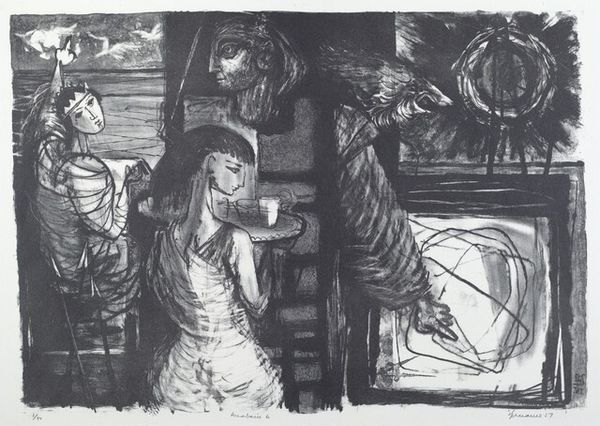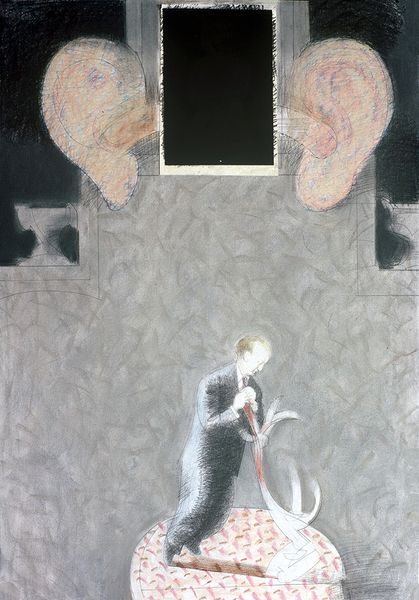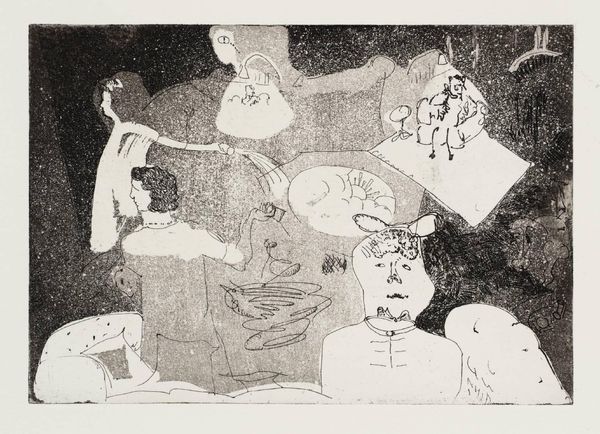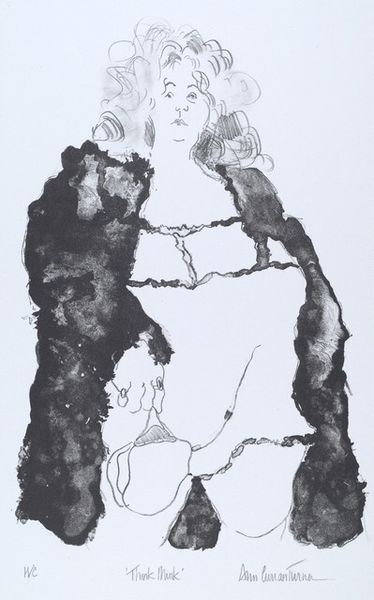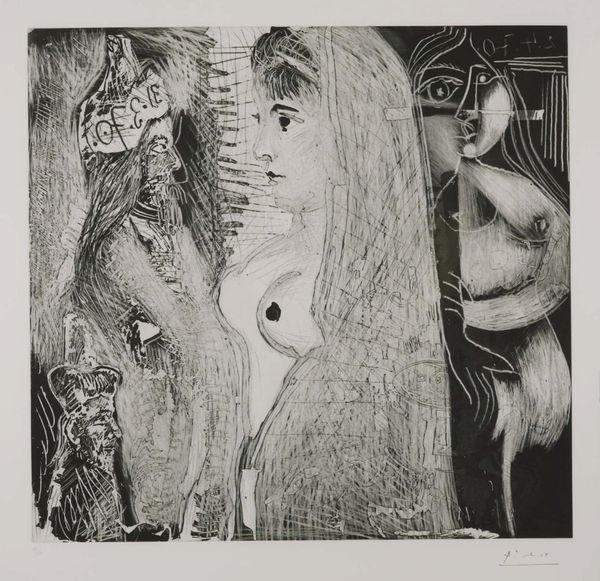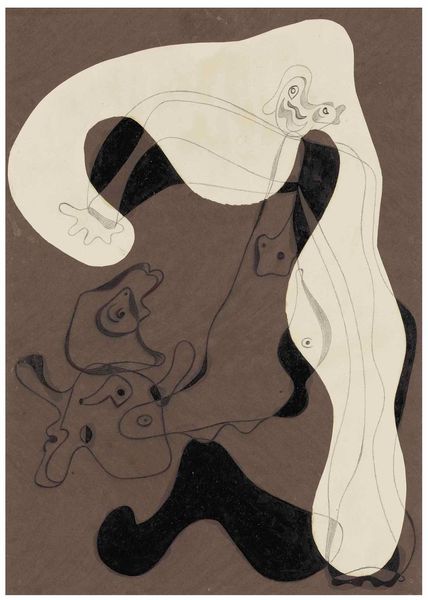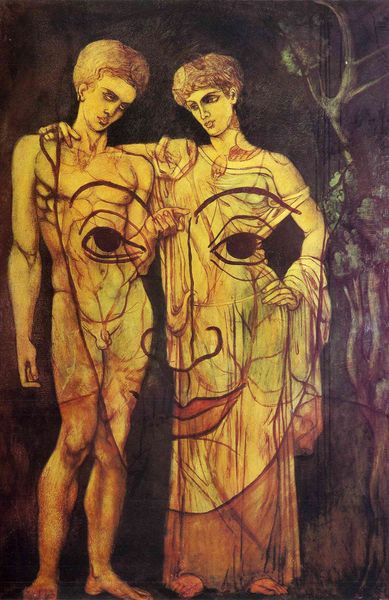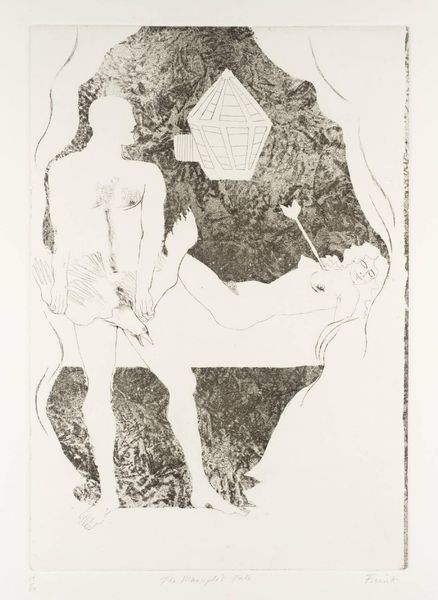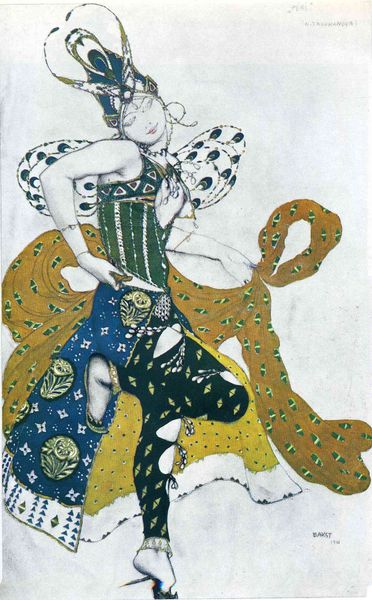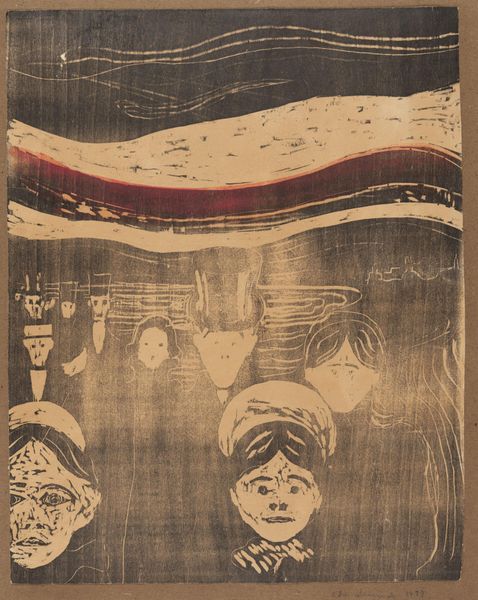
#
allegories
#
acrylic
#
symbol
#
sculpture
#
possibly oil pastel
#
oil painting
#
acrylic on canvas
#
underpainting
#
painting painterly
#
3d art
#
mixed media
#
watercolor
Dimensions: 430 x 300 cm
Copyright: Public domain
Curator: Standing before us, though sadly now only in reproduction, is Gustav Klimt's "Jurisprudence (final state)," completed in 1907. It was part of a series commissioned for the University of Vienna, and, oh, what a scandal it caused! Editor: Immediately, it evokes a sense of deep unease. The somber palette and those haunted figures… it’s as if justice itself is shrouded in darkness and anxiety. Curator: Precisely! Klimt aimed to challenge the conventional, sanitized portrayal of law. Look at that central figure, writhing and contorted, seemingly consumed by a monstrous octopus-like creature. That represents the law, but hardly as a beacon of hope! It feels like being strangled by red tape, doesn’t it? Editor: Indeed. The serpentine form tightly binding the central figure highlights the crushing, inescapable weight of the law. The sinuous lines and claustrophobic composition amplify this sense of oppression. The figures at the top too – who are they? Curator: Those are meant to represent the Furies, divine personifications of vengeance! And beneath, those tormented souls, they embody the victims of the legal system. No bright allegories here – just stark human suffering. The asymmetry, the raw emotional power – it really spoke truth to power, and boy did those in power hate it. Editor: Yes, I can see how his critical vision created controversy. The faces possess this almost ethereal, pained quality, a sharp contrast with the brutal imagery of constraint. There’s a profound tension created by Klimt’s almost ornamental aesthetic treatment of such disturbing subject matter. Curator: That's Klimt for you – beauty interwoven with uncomfortable truths. "Jurisprudence," even in its vanished state, challenges us. It demands that we look critically at power, at justice, and question the narratives we’re told. Editor: It leaves one with a lingering feeling that the machinery of law may not always work to our advantage, visually representing its capacity for inflicting its own damage, perhaps greater in the name of "justice".
Comments
No comments
Be the first to comment and join the conversation on the ultimate creative platform.
